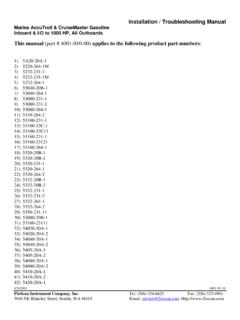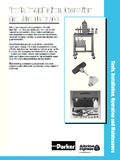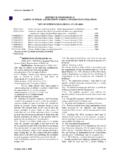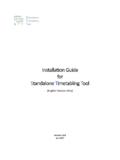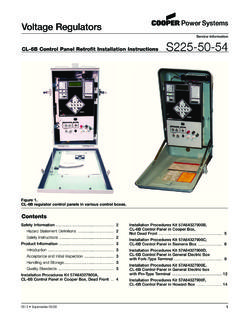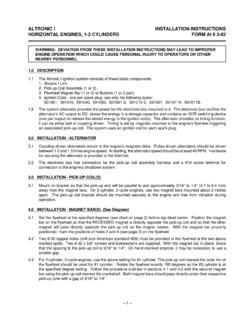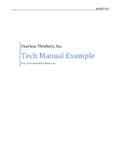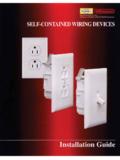Transcription of Installation / Troubleshooting Manual
1 4/23/2012 7000-138-70 FloScan Instrument Company, Inc. Tel: (206) 524-6625 Fax: (206) 523-4961 3016 NE Blakeley Street, Seattle, WA 98105 Email: Installation / Troubleshooting Manual MFI, Diesel, In Line Injection, K Series, with Magnetic Pick-up, AC Signal Generator, or Alternator Pick-up Tachometer This Manual (part # 7000-316-05) applies to the following product part numbers: 1) 750M-201-2K 2) 750M-231-2K 3) 750M-BOS-2K 4) 750M0-2012K 5) 750M0-2312K 6) 750M0-BOS2K 7) 75TM-235-2K 8) 75TM0-2352K 9) 77TM-235-2K 10) 770M-201-2K 11) 770M-231-2K 12) 770M-BOS-2K 13) 770M0-BOS2K 14) 770M0-2312K 4/23/2012 7000-138-70 FloScan Instrument Company, Inc.
2 Tel: (206) 524-6625 Fax: (206) 523-4961 3016 NE Blakeley Street, Seattle, WA 98105 Email: 12/12/2011 4001-386-00K FloScan Instrument Company, Inc. Tel: (206) 524-6625 Fax: (206) 523-4961 3016 NE Blakeley Street, Seattle, WA 98105 Email: Installation PLANNING ! ! READ ME FIRST - Detailed Mechanical & Electrical Planning Saves Installation Hours!
3 FloScan systems are not difficult to install. Installing one requires only basic electrical & mechanical skills. With forethought and planning, your system will be installed with few problems. I. Installation Preparation: Review the pre- Installation booklet and mechanical Installation instructions and survey your vessel. Determine where the Sensor(s), Pulsation Damper(s), (If used) Switches and Instruments are to be mounted. Place them at their approximate locations. Measure fuel line lengths between system components, (Primary Filter, Sensor(s), Damper(s), Engine, and Fuel Tank.)
4 Determine fitting sizes and type of fittings needed for each plumbing connection, (JIC, SAE, NPT, NPTF, or Hose Barb). FloScan Series K High Flow, Diesel system components have 1 , and Female NPT ports. FloScan Series K Standard Flow, Diesel, system components have Female NPT ports. FloScan Gasoline High Flow, system components have Female NPT ports. FloScan Gasoline Standard Flow, system components have Female NPT ports. Gasoline Fuel Systems: USCG requires Type A-1 Fuel Hose to be installed between the fuel tank and the engines fuel inlet connection.
5 Type B-1 may be used if certain safety requirements are met, (33 CFR, Subpart J, ). 33 CFR Subpart J, require hose clamps to be made from a corrosion resistant material. To meet American Boat & Yacht Council, (ABYC) standards, the clamps must be made from a corrosion resistant metal, (ABYC, ). Diesel Fuel Systems: Installing sensor assemblies in the fuel system can comprise approximately 1/3 of the total Installation cost. Careful planning prior to Installation will minimize expenses. Existing fuel systems can be plumbed with Fabric Braid Hose, Steel Braid Hose, Metal Tube or Steel Pipe.
6 If your hose, tube or pipe is in good condition, there is no need to replace it when installing the sensor assemblies. Review the electrical Installation instructions. Open and survey your vessel s wire ways. Determine if it would be easier to run a 3-conductor cable from each sensor to the instrument, or install a junction box, (J-Box) with terminal strip in the engine room. The J-Box requires a 4-conductor cable from it to the instrument, and a 3-conductor cable from each sensor. Measure cable lengths from sensor(s) to J-Box, (If used) to Instrument.
7 Tachometers require a separate 2-conductor cable. If there s an existing tachometer, its signal wires can be used. Tools required are paper, pencil, and measuring tape. II. Mechanical Installation : Install or mount the Sensor/Pulsation Damper assemblies, or Sensors, Instruments and Switches, (Reset, MPG, Port/Starboard, Synch). When installing the sensor assemblies, try to locate them where you will only have to make one fuel line cut per sensor. You can locate the sensor at any convenient location. Try to have two or more feet of hose between sensor and engine.
8 III. Plumbing: Fabric Braid Fuel Hose: This is the easiest hose to work with and generally uses hose barb fittings. Example: 12 HB X 16 MNPT, (3/4 Hose Barb by 1 Male NPT). Install the correct HB X NPT fitting into each fuel system component, Tank, Manifolds, Filter, Sensor(s) Damper(s) and Engine. Assemble fittings using a fuel proof pipe thread sealant. Never use Teflon Tape. Referring to the Fuel Flow Schematic, run the fuel hose between system components. Cut to correct length with a pocket or razor knife.
9 Hoses should not be twisted, have adequate slack, an ample radius at all bends and be supported at reasonable distances, approximately 2-4 feet. When clamping hose onto the barbs, use 2 narrow stainless steel hose clamps, (preferred) or 1 wide stainless hose clamp on each hose end. 12/12/2011 4001-386-00K FloScan Instrument Company, Inc. Tel: (206) 524-6625 Fax: (206) 523-4961 3016 NE Blakeley Street, Seattle, WA 98105 Email: Wire Braid Fuel Hose: There are two types of wire braid fuel hose.
10 One type has reusable hose ends the other swaged ends. Wire braid hose tend to use JIC or SAE X NPT fittings. Install the correct fitting into each fuel system component, Tank, Manifolds, Filter, Sensor(s) Damper(s) and Engine. Assemble fittings using a fuel proof pipe thread sealant. Never use Teflon Tape. Referring to the Fuel Flow Schematic, run the fuel hose between system components. Cut to correct length and install hose ends. If you choose to do this yourself, (reusable ends only) rent a hose-cutting tool and purchase a tube of assembly lubricant.
